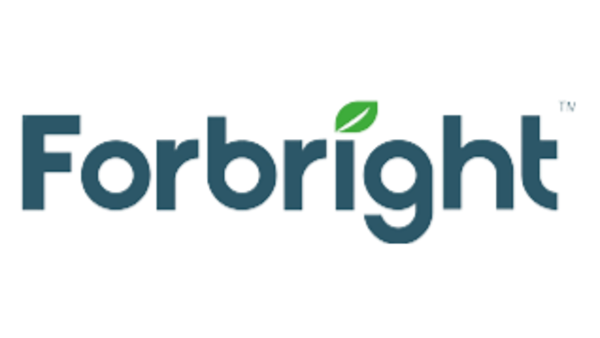
Best online high-yield CD accounts for 26 September 2025
Looking for the best online high-yield CD accounts for 26 September 2025? Look no further! We've carefully curated a list of the top savings accounts that offer competitive interest rates and convenient online features. Whether you're saving for a rainy day, a future purchase, or test a long-term goal, these accounts can help you maximize your savings potential.
How to choose an online high-yield CD account
A high-yield savings account can help your money earn a competitive annual percentage yield (APY). But you’ll want to shop around to find the account that’s right for you. Most of the accounts on Bankrate’s best lists are online savings accounts at FDIC banks. This is because online high-yield savings accounts generally offer the highest rates, and most of them require either a low minimum balance or none at all. FDIC-insured accounts at online banks are also a great place to keep an emergency fund.
Here are some steps to follow when deciding whether a high-yield savings account is best for you:
Define what your goal is for this money and when you may need the funds. A savings account is often a good place for an emergency fund or money you might need for expenses in the near future.
Compare banks and savings accounts to find the right account for you. APYs, minimum balance requirements and whether there’s a monthly service fee are all key things to consider. Online banks tend to offer the most competitive yields. Bankrate’s bank review scan help with your research.
Be sure to choose a federally insured institution, which would be a bank insured by the Federal Deposit Insurance Corp. (FDIC) or a credit union insured by the National Credit Union Share Insurance Fund (NCUSIF). This way your money would be safe if the institution were to fail, as long as your deposit amounts are within the limits and guidelines.
Open the savings account and make your initial deposit.
Make it a habit to check your bank statement on a regular basis. This is a good way to keep an eye on your APY since savings account yields are usually variable.
Pros and cons of online high-yield CD accounts
Savings accounts are a good place to set aside funds for many financial goals. Here are the pros and cons of online high-yield savings accounts, so you can make sure one is right for you.
| Online high-yield savings accounts typically pay a much higher APY than traditional savings accounts. | Rates for high-yield savings accounts are variable and could fall. |
| Many high-yield savings accounts offer digital tools that allow you to manage your savings easily through your computer or smartphone | Some banks restrict withdrawals/transfers to only six a month. |
| High-yield savings accounts at most banks and credit unions are insured by the federal government, meaning your money is safe. | Checks generally can’t be written using savings accounts. |
| Unlike with a certificate of deposit, funds in a high-yield savings account are easily accessible. | Your money could get higher returns if you invest it. |
| Not all online banks offer branch or ATM access. |
How to open a high-yield CD account
Whether it’s building an emergency fund or saving for a vacation or another big expense, a high-interest savings account can help you reach your goals. Plus, opening a high-yield savings account is relatively simple. Here’s how:
Shop around. High-yield savings accounts can be offered by online banks, traditional banks that operate branches, and credit unions. Online banks typically offer the highest rates because they don’t have the overhead associated with maintaining branches — so they may pass along the savings to customers, in the form of higher rates. Along with APY, compare the fees and services to find the right fit for your finances.
Fill out an application. Once you’ve chosen a high-interest savings account, you’ll need to fill out an application, whether online or in person. The bank or credit union will ask for personal information that often includes your driver’s license number, Social Security number, mailing address and date of birth. When applying online, you might need to scan a copy of a government-issued photo ID.
Fund your account. After the application is approved, it’s time to fund the account. This can be done online by linking a checking account to the new savings account and transferring funds. Depending on the bank, the new savings account can also be funded with cash, through a wire transfer or by mailing a check. Many banks also permit mobile deposits.
What to do if you are unable to open a high-yield CD account
If you’re unsuccessful in opening a new account, you can ask the bank why this happened. Depending on the answer, you might want to go to ChexSystems’ website and request a report to see whether your banking history is the reason you were denied the account.
If you’re unsuccessful in opening a new account, you can ask the bank why this happened. Depending on the answer, you might want to go to ChexSystems’ website and request a report to see whether your banking history is the reason you were denied the account.
High-yield CD accounts
Alternatives to high-yield CD accounts
High-yield CD account vs. traditional CD accounts
High-yield savings accounts and traditional savings accounts share certain similarities, yet there are some key differences. High-yield accounts are frequently available online, while some traditional savings accounts — which include both passbook and statement savings accounts — might be restricted to opening and managing at a bank branch.
As the name suggests, high-yield savings accounts typically earn much higher rates than traditional savings accounts, and they may require a larger opening deposit and have minimum monthly balance requirements. Both accounts are subject to monthly fees, depending on the institution, but many banks offer high-yield and traditional savings accounts that charge no fees.
High-yield CD account vs. savings accounts
A high-yield savings account is a liquid account that’s meant for money you might need to withdraw at any time. Besides the flexibility of making withdrawals on demand (though they might be limited per statement cycle), you’re also able to add money to this account anytime.
Unlike savings accounts, CDs lock in your money for a set term, and if you withdraw your money before the term expires, you’ll usually incur an early-withdrawal penalty. What’s more, you typically can’t add money to a regular CD during its term.
High-yield CD account vs. money market accounts
Generally, a high-yield savings account doesn’t permit account holders to write checks against the account, while many money market accounts provide check-writing privileges.
Otherwise, money market and high-yield savings accounts are similar and typically available at FDIC-insured banks. Savings accounts are slightly more common than money market accounts, but many banks offer both.
High-yield CD account vs. checking accounts
A high-yield savings account is likely to pay a better yield than a checking account. Savings accounts might limit the number of withdrawals or transfers you can make per statement cycle.
Checking accounts are more for transactional purposes, such as paying bills or making debit card purchases. Checking accounts usually don’t have monthly transaction limits.
Research methodology
Bankrate’s editorial team regularly updates rates on this page about every two weeks. We mainly look for the highest APYs and break ties using the minimum balance to open a CD. Bankrate’s editorial team has reviewed nearly all of the banks and credit unions that they track. These institutions were selected because they offer competitive APYs, are larger (based on the amount of deposits or assets), frequently appear in internet searches or other possible factors. These banks and credit unions typically offer accounts that are available nationwide. All of these banks are insured by the Federal Deposit Insurance Corp. (FDIC) and all of the credit unions are National Credit Union Administration (NCUA) credit unions, insured by the National Credit Union Share Insurance Fund (NCUSIF).
BankGrader's experience on financial advice and reporting
Bankrate has more than four decades of experience in financial publishing, so you know you’re getting information you can trust. Bankrate was born in 1976 as “Bank Rate Monitor,” a print publisher for the banking industry and has been online since 1996. Hundreds of top publications rely on Bankrate. Outlets such as The Wall Street Journal, USA Today, The New York Times, CNBC and Bloomberg depend on Bankrate as the trusted source of financial rates and information.
Some random products
Keywords test:
TopRateCD: 6.00%
TopRateHealthSavingsAccount: 0.00%
AvgRateCheckingAccounts: 0.01%
AvgRateBusinessMoneyMarket: 1.77%







